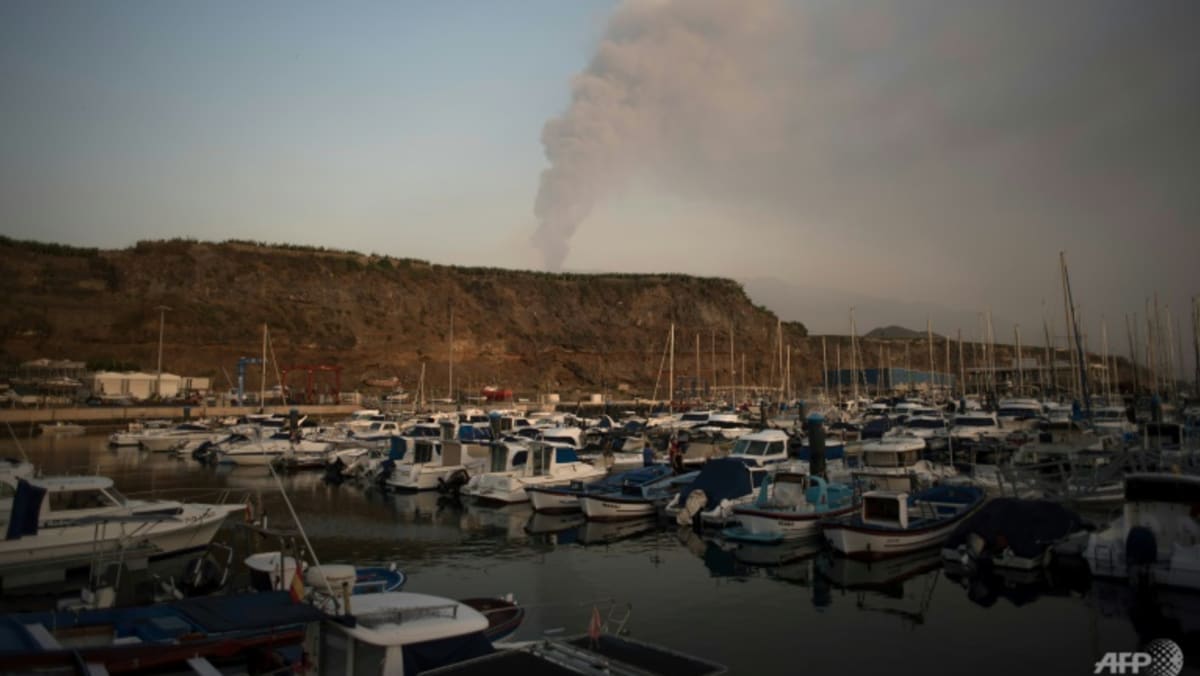La Palma volcano evacuees face huge reconstruction challenges
LOS LLANOS DE ARIDANE: The lives of thousands may have been devastated by the volcano’s eruption on La Palma island, but many are starting to dream of returning home and starting to rebuild.
It has been more than two weeks since La Cumbre Vieja began erupting, forcing more than 6,000 people out of their homes as the lava burnt its way across huge swathes of land on the western side of La Palma in Spain’s Canary Islands.
And there is no legislation that prevents them from going back to their homes in the Aridane valley, a fertile agricultural area that is home to 20,000 people that has borne the brunt of the eruption, with the lava destroying more than 1,000 buildings.
Unlike Italy’s Mount Etna or Mount Fuji in Japan, which have one central vent, the volcano on La Palma makes a new fissure each time it erupts, meaning it isn’t possible to set up a clearly defined exclusion zone.
“It wouldn’t be much help, because these type of volcanoes erupt wherever they want,” said Manuel Perera, an architect and head of urban planning in Los Llanos de Aridane, the worst-hit area on the western side of the island.
During the last two eruptions on La Palma in 1949 and 1971, there was very little damage, largely because the population density was much lower.
What is clear is that nobody wants to leave.
“I’m not going anywhere,” insists Pedro Antonio Sanchez, a 60-year-old resident whose banana plantation was damaged in the eruption but who is determined to stay put.
“There are whole populated areas like Todoque and others that have disappeared and many residents, who have roots there, want to stay in the area,” Canary Islands’ regional leader Angel Victor Torres told local newspaper El Diario de Avisos on Monday.
The only regulation regarding the right to rebuild has to do with the cooled lava, which must be respected as “a protected natural space” – meaning no-one can build on it, Perera says.
But the authorities appear to be taking a more flexible approach.
“A draft bill is being prepared that will classify this land as suitable for development in order to allow the orderly reconstruction of areas that have been destroyed,” Torres said.
‘LIFE ON MARS’
The Atlantic archipelago, which is located off the northwestern coast of Africa and counts seven islands, has undergone huge changes as a result of volcanic activity over the past 12,000 years.
“This is just what happens in the Canary Islands and many people from the mainland do not really understand. They are not islands facing a volcanic threat, they are volcanic islands,” wrote journalist Alfonso Gonzalez Jerez in Sunday’s El Dia newspaper.
“The Canary Islands are not surviving in spite of the volcanoes: it is the volcanoes that have created the Canaries.”
Although it is scientifically impossible to predict when the eruption will end, some experts have spoken of several weeks based on previous experience.
And it could take the lava six to nine months to cool, Borja Perdomo, regional head of infrastructure, said this week, quoting experts.
Some residents have asked the authorities not to impose any restrictions on the area but experts say it would be impossible to build any houses there in the short term.
“It would be like being on Mars,” explained Perera.
“It’s the worst place on the whole island for reconstruction because it could be months or even years until it cools down.”
So far the lava has covered more than 1,000 acres (434 hectares) of land, and when it cools, it will have “an irregular surface with steep drops that is very uneven,” he said.
“It’s terrain that is very difficult to work with.”
NEW FERTILE LAND?
Despite the ongoing eruption, life is carrying on as normal in most of the island, except for the disruption caused by damaged and destroyed roads.
The lava has covered less than 8.0 per cent of the Aridane valley and this is where the biggest changes will take place, starting with the rehousing of those who have lost their homes.
The island has also gained another 75 acres of surface area due to the lava pouring off a 500-metre stretch of coastline into the sea, creating a vast delta that will be used at some point in the future.
On the island of El Hierro, a similar deposit has become a tourist attraction for its natural pools, while in the delta created by the 1949 eruption of La Palma’s San Juan de la Plata volcano was used for banana plantations.
At that site, which lies just down the coast from the newly-created lava delta, locals went to work levelling the surface using little more than picks and shovels, with the resulting land one of the most fertile areas for growing bananas.
For all the latest world News Click Here

